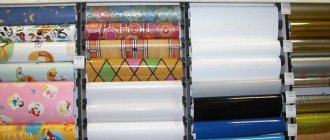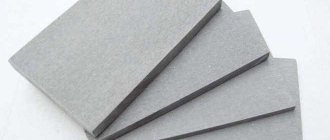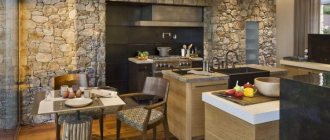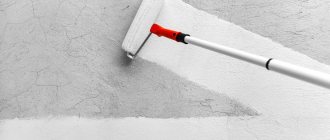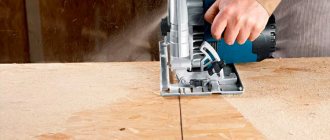Having purchased a new apartment or a new house, you always want to create comfort in it, so that the decorative covering of the walls pleases the eye and looks stylish. Wall panels for interior decoration have recently become popular; people appreciated the ease of installation and the diversity of the product range. Everyone can find a suitable color and panel design for themselves. The types and materials of wall panels will be discussed in detail below.
Advantages and disadvantages of wall panels for interior wall decoration
Before you start talking about the types of wall panels, it’s worth stopping at a description of their pros and cons. Knowing both of these sides of the material, you can easily understand whether you should choose a panel type of finish, or look for other options
Wall panels have the following advantages:
- ease of installation, it will not be difficult to install the plates on the walls yourself, while saving on the involvement of specialists;
- does not require spending time and money on carefully leveling the walls;
- durability, easy maintenance;
- diversity of species;
- acceptable price;
- with their help, all communications are hidden, which will also improve the decorative appearance of the room.
But the plates also have disadvantages:
- since they are installed using lathing, they take up part of the area;
- some types are easily deformed under mechanical stress.
With their help, all communications are hidden, which will also improve the decorative appearance of the room.
Types of wall panels for interior decoration
As noted above, on the market you can see various types of wall panels for interior decoration, so it is so easy to choose a suitable option that will satisfy the stylistic requirements of the owner of the room. The following will describe the main types of panels.
Rack and pinion
Slatted wall panels are easy to install, corner parts do not cause difficulties, they are easily adjusted to such places. To connect them together, special fasteners are available for sale, and to cover the fastening points, you can easily select corners that match the color, etc.
The assortment is varied; the option with a wood pattern is often chosen.
Slatted wall panels are easy to install.
Leafy
The sheets are distinguished by their large sizes, which reduces the time for installation work. A plus is also noted that they are not attached to the sheathing, and the excess space will not be taken away. They are attached using an adhesive composition.
Made from fiberboard, MDF and PVC. Often an imitation of wood and stones is created; they are durable and light. The plastic type tolerates moisture well.
When using fiberboard to make sheet plates, they cannot be used in rooms with high humidity.
The sheets are distinguished by their large sizes, which reduces the time for installation work.
Tiled
Wall slabs can be square or rectangular in shape. Tile plates can have a textured structure, and with their help you can perfectly diversify the decor of a room. There are special locking connections that allow them to be conveniently installed on the surface.
Tile plates can have a textured structure, and with their help you can perfectly diversify the decor of a room.
3D
This is a new material that quickly became quite popular, because the resulting 3D effect makes the wall unique and stylish. Such plates are made from various types of materials:
- chipboard;
- aluminum;
- gypsum;
- glass;
- plastic;
- MDF;
- bamboo.
All of them are distinguished by their visual appeal, ease of maintenance, ease of installation, wear resistance, and good noise insulation properties.
Disadvantages include high cost and the need to install sheathing.
The 3D effect makes the wall unique and stylish.
Other possible types
It can also be noted that the panels can be metal, glass or mirror plates. The latter type creates a unique coating, replacing mirrors in the house; they are usually combined with other types of panels. They all fit comfortably and are easy to clean. All possible panel options, which differ in the type of material, will be described below.
Mirror panels create a unique finish, replacing mirrors in the house.
Examples of using
Decorative panel made from finishing elements
In design projects, finishing panels are used for different purposes and for non-standard solutions.
There are such methods of decorative finishing:
1Full finishing – all vertical surfaces are covered
2Closing the bottom or top of the wall. Suitable for a living room, hallway, hallway or private office decorated in a classic Victorian style
3Combination of different materials and shapes. Wood and leather, glass and stone, PVC and plaster go well together. The main thing is to maintain an acceptable color combination
4Accents in the interior using panels
5Panel, painting or art object made from finishing elements
6Covering the ceiling with decorative sheets
Decorative interior decoration using panels is a wonderful way not only to update the interior of an apartment, but also an opportunity to additionally insulate and soundproof the room. The most reliable materials for cladding are wood, glass and PVC, and the most budget-friendly ones are chipboard, fibreboard, and plastic.
By choosing a finish for its intended purpose and taking into account the main operational characteristics, you can get a result that will delight the owners for a long time.
Experts talk about the properties and methods of installation of the most budget-friendly finishing materials in the video:
Materials from which wall panels are made
The type of material from which the plates are made is an important factor when choosing a product. After all, it affects the properties of the plates.
Tree
Wood has been used for wall cladding for a long time, but the natural material is highly expensive. And modern technologies have made it possible to combine cheaper rocks with expensive ones to create plates. Therefore, the price of the plates is strikingly different from similar natural materials. Wood grain suits many styles.
Wood grain suits many styles.
MDF
MDF panels are safe for humans, so they can be safely used for residential premises. They have heat and sound insulating properties, are durable, and imitate a wooden surface at the highest level. Construction work is also easy to carry out.
MDF panels are safe for humans, so they can be safely used for residential premises.
PVC
PVC wall plates are made either as slabs or sheets. You can find plates of various widths on sale. They are absolutely safe for human health, easy to clean, moisture-resistant, lightweight and come in a variety of colors.
They are absolutely safe for human health, easy to clean, and moisture resistant.
Chipboard and fibreboard
They are distinguished by their low price and ease of installation. The presence of formaldehyde resins in the composition reduces their positive qualities. They have noise-insulating and heat-insulating properties. It should be noted that they are unstable, when exposed to vapor and humidity, they quickly lose their attractive appearance and become deformed.
They have noise-insulating and heat-insulating properties.
Plaster
Indoors, gypsum plates create an excellent coating that will help regulate the microclimate. But they are not suitable for rooms with high humidity. It is difficult to care for, but if you use special products, care will become easier. They have good thermal insulation and sound insulation. It is possible to replace an individual plate without removing the entire finish.
Indoors, gypsum plates create an excellent coating that will help regulate the microclimate.
Bamboo
A natural material that is becoming increasingly popular. Non-flammable, environmentally friendly, durable, affordable price and easy to install. All these characteristics make bamboo so popular. But not everyone may like this type of decor; it all depends on individual preferences.
A natural material that is becoming increasingly popular.
Metal
Metal plates are made from non-ferrous or regular metal and can be mounted on the ceiling of a wall. Create a unique room design. Easy to install, you can choose a square or rectangle shape. May have a perforated pattern.
Create a unique room design.
Glass and mirror
Mirror panels are also becoming more and more popular; they are easy to install, flexible, but require frequent wiping. Glass and mirror types are made in different shades, give the room an unusual look, and visually increase the space.
They give the room an unusual look and visually increase the space.
Concrete
Concrete plates are used when styling rooms under high-tech and minimalism. They are flexible and easy to install. Durable and reliable. Special forms can be used to give an interesting decorative look to the concrete.
Concrete plates are used when styling rooms under high-tech and minimalism.
Other possible materials
You can also note gypsum vinyl plates; on the outside, the gypsum is covered with vinyl material. They are durable and strong, and withstand mechanical stress well. May be of different colors. You can also note their moisture resistance.
They are durable and strong, and withstand mechanical stress well.
In addition, cork panels are becoming popular. Cork has a unique pattern and is an eco-friendly material that can give a pleasant appearance to a room.
In addition, there is a fabric look.
This is an eco-friendly material that can give a pleasant appearance to the room.
Sheathing classification
Finishing elements
Finishing panels are produced in the form:
- Sheets up to 2–2.5 m long and about 100 mm thick. They are attached to a sheathing of metal profiles or glue, and the joints are masked with moldings. They consist of several layers of wood-fiber boards impregnated with resin. Imitate the design of natural materials (stone or wood)
- Reek . Rectangular elements up to 4.6 m long, 30 cm wide. The thickness of such panels does not exceed 12 mm. They can be installed in any direction, and the joints are closed with clamps; they come in white and colored. A balanced choice for rooms with complex shapes and many angles. The elements are connected to each other by tenons and grooves, mounted on a frame made of wooden or metal guides
- Tiles . Small in size: 100 cm in length, 50 cm in width, such elements are universal for installation. They can be made in the shape of a square with sides from 30 to 98 cm. They are attached to a lathing made of wooden beams with glue or special clamps
- Sandwich panels - a specific shape that is used not for decoration, but for the construction of partitions
Wooden slatted cladding for finishing has a special name - lining.
Wall panels
Wall panels are made from:
- natural wood
- fibreboard, chipboard, MDF sheets
- plastic
- traffic jams
- glass
- become
- acoustic foam rubber
- gypsum (gypsum vinyl, drywall)
- stone veneer
- leather, eco-leather, fabric
- PVC
Traditional combinations of shape and material are presented in the table.
| Form | Material |
| Lining, slats | Wood, plastic |
| Plate | Wood, gypsum, MDF, fiberboard, chipboard |
| Tile | PVC, gypsum, glass |
Wooden
Solid wall panels
Finishing made of natural wood (oak, alder, elm, walnut, cedar) adds elegance to the interior. It is often used to decorate a hallway, personal office or living room.
Such panels are coated with a protective varnish; they are safe for humans, non-toxic and are considered an environmentally friendly finishing method.
When producing the material, wood fibers are laid on top of each other so that they are perpendicular, providing additional strength to the structure.
An unusual solution for the interior could be the use of balsa or bamboo cladding. They do not become dirty and do not accumulate condensation.
Wooden panels
Contrary to the belief that, due to hygroscopicity, wooden panels can only be installed in dry rooms, after waxing, they can also be installed in the bathroom. Thanks to special impregnations, the material also becomes non-flammable.
Wood absorbs sounds and retains additional heat in the room. The only drawback of wooden finishing is the high price. In addition, excess wood can give the living space an overly formal, strict look.
Installation of wooden slabs, sheets and slats is a labor-intensive process that requires skills and special construction tools. It is very difficult to independently install wall cladding with wood in a high-quality and even manner.
Chipboard finishing
Chipboard cladding
Compressed particleboards impregnated with phenol-formaldehyde resin have performance characteristics similar to natural wood, but are cheaper. The outer layer is decorated with veneer, which gives the slabs an attractive appearance, or laminated with plastic.
Of course, chipboard panels are not as durable as wood, they are susceptible to moisture and can delaminate. However, additional water-repellent impregnation, lamination and decoration can improve the performance characteristics of the material.
Fiberboard panels
Fiberboard is used for finishing
The basis of such boards is a mixture of pressed tree bark and wood chips with paraffin or rosin. Most often, wide finishing panels are made from fiberboard, which are distinguished by water-repellent characteristics. They can imitate natural stone, tile, brick, ceramics or wood.
The outer layer of raw materials is decorated with a plain, textured pattern or photo printing. The elements are attached to the wall not only with moldings along the edges, but also glued over the entire area of the wrong side (end). If this step is neglected, the fiberboard board may swell in the middle over time.
Such panels are:
- painted
- veneered
- laminated
MDF sheathing
MDF sheathing
The optimal coating for finishing rooms with high humidity: MDF is not at all afraid of water. In the production of this material, wood shavings are converted under high pressure into a monolithic sheet that can withstand mechanical damage and the effects of aggressive chemicals.
This material does not accumulate dust, so it is easy to use and can be easily washed off grease and dirt.
PVC
Textured panels made of polyvinyl chloride
Polyvinyl chloride is a synthetic substance that is superior to natural materials in a number of characteristics and is cheaper. This is why PVC is so widely used in construction, renovation and decoration.
Polyvinyl chloride coatings:
- durable
- show a high level of fire resistance
- are not afraid of moisture
- do not change characteristics and appearance at low temperatures
- easy to wash
Such slabs consist of 2 layers, between which reinforcing inserts made of stone chips are possible. Best suited for cladding bathrooms, toilets, corridors, loggias and kitchens.
When heated, PVC materials emit toxic substances (in particular, chlorine), so it is not recommended to use it for decorating children's rooms and bedrooms
PVC panels
At the same time, the material is easily subject to deformation - slabs and slats made of it can be easily cut with an ordinary construction knife, scratches and cracks quickly appear on the surface.
During installation, all joints and seams between elements should be carefully treated with sealant. If water gets into the gaps, fungus can develop and mold can grow.
If the material contains recycled PVC, then you don’t need to expect resistance and durability from such panels: they are cheap, but they won’t last long. It is easy to distinguish them from high-quality slabs: dark spots and dots will be clearly visible on the surface of recycled materials.
Plastic
Plastic sheathing
Like other artificial materials, plastic made from polymers has increased resistance to moisture. These are the panels that are recommended for installation in the kitchen or bathroom. In a private home, plastic sheets have proven themselves well when finishing verandas, storage rooms and summer kitchens.
Plastic finishing sheets weigh little, so they do not require additional fasteners or the use of glue. They are standardly produced in the form of long (about 6 m) slats up to 30–40 cm wide. They are also well suited for covering ceilings.
During use they do not lose their color, are easy to clean and are inexpensive. They can believably imitate natural materials (brickwork, tiles).
Plaster
Gypsum sheathing
GVK - gypsum-vinyl panels - today are considered a popular material for decorative finishing. They are made of a natural mineral - gypsum - and covered with vinyl film. To install GVK, no preliminary leveling of the walls is required; it can replace decorative plaster.
Such slabs are easy to clean, durable, resistant to aggressive chemicals and mechanical stress.
Pure gypsum panels are also used in decoration, but less often. The main reason for this is the fragility of the raw material, its heavy weight and its hygroscopicity. One of the undeniable advantages of the material is the ability to give it any shape.
Pure plaster is well suited for interior decoration in an antique style.
Gypsum is a hypoallergenic material, safe and durable. Parts or elements that have become unusable can be easily replaced and restored. Does not absorb foreign odors and does not attract dust.
A cheaper option is drywall. It is most often used for wall cladding in offices and commercial premises. The material is easily and quickly installed without unnecessary debris and dust.
Glass
Glass wall decoration
Decorative panels made of glass with photo printing applied to it are called skinali. Made from tempered glass or acrylic. They look worthy in the decor of a kitchen, living room or bedroom.
The material is resistant to moisture, durable, highly resistant to wear and abrasion, and is not subject to combustion.
In order to emphasize the beauty and originality of the skin, LED lighting is used.
Stone veneer
Stone veneer as finishing
One of the materials new to consumers, which has not yet become widespread. It is based on a cut of natural slate (or any other stone) and fiberglass. The thickness of such slabs is usually small.
The main advantage of the material is its texture and natural roughness and convexity. Will fit well into a living space decorated in a loft style.
Other options
Steel panels
Not so widespread, but they have found their adherents and admirers, such non-standard solutions for interior decoration:
- Soft decor. Made from fabric, felt, suede, leather and its substitute, such finishing panels have an exclusively decorative function. Most often, elements are used in small quantities in the form of a mosaic. Advantages: pleasant to the touch, look unusual, can be of any shape. You can make such panels yourself from fiberboard or chipboard base, foam lining (or polyurethane foam) and fabric glued on
- CorTen steel in sheet form. Not subject to corrosion, can be used to decorate an apron in the kitchen. A strong and durable material that looks like bronze, but feels soft like velvet or suede.
- Acoustic panels for finishing recording studios, radio station premises, cinemas. Made from cellulose and wood fiber, gypsum, melamine, plasterboard, basalt wool, fiberglass
- Decorative brick
3D finishing
Decorative 3D panels
A separate group of finishing boards are volumetric panels based on wood, gypsum, and wood products. They consist of several layers and, in fact, are multi-composite.
So, the base is usually made of plaster and metal, the middle is made of embossed wood, and the surface is covered with enamel or veneer, and a polyvinyl chloride film is applied.
Such finishing will help isolate the room from excess noise, but will take away part of the usable area of the living room. 3D panels are easy to install and clean; they combine well with other finishing materials.
Criteria for selecting wall panels for interior wall decoration
When choosing the type of plates, you first need to understand what characteristics are important. Do they need to be moisture resistant?
They must be fireproof and harmless to human health. If desired, you should also pay attention to the environmental friendliness of the coating.
Of course, the design of the room is also important, because they must fit well into it. And the cost of the material affects the choice in case of a limited budget.
The panels must be fireproof and harmless to human health.
Options for decorating different rooms with wall panels
Before choosing finishing panels, you need to consider possible options for specific rooms. This will make it easier to understand which coating you like best.
Bedroom
In the bedroom you can use fabric panels that will highlight the head of the bed. Mirrored europanels will greatly increase the space. Various types of MDF products will also fit well into a room intended for sleeping. Can be combined with other types of finishing materials.
In the bedroom you can use fabric panels that will highlight the head of the bed.
Living room
For the living room, it is better to choose panels made from natural materials. You can use textured types, rear effect, wood patterns are also successfully used in combination with other facing materials.
For the living room, it is better to choose panels made from natural materials.
Kitchen
In the kitchen, panels are most often used to create an apron that protects the walls from moisture and dirt. Here you can choose stone designs, wooden ones, or a variety of bright solutions that should match the color of the kitchen set. You can use drawings of fruits, food, coffee, etc.
In the kitchen, panels are most often used to create an apron that protects the walls from moisture and dirt.
Bathroom
In the bathroom, marble and brick patterns are now often used, combined with other more familiar materials.
They use panels that form a specific pattern. Or imitating tiles. 3D panels with a marine theme will also look impressive.
In the bathroom, marble and brick patterns are now often used, combined with other more familiar materials.
Toilet
The design of the toilet should be consistent with the rest of the rooms, at least with the bathroom. You can use options with patterns, but it’s better not to choose voluminous options; in a small space with such a pattern it won’t be comfortable. It is better to use plain panels, or with small patterns.
It is better to use plain panels, or with small patterns.
Hallway
Mirror panels will look good in the hallway. And imitation brick or stone. The hallway can be divided into two parts using a combination of different materials. For example, the entrance part can be finished with plates so that they can be quickly cleaned. And the lobby area with paint or wallpaper.
The hallway can be divided into two parts using a combination of different materials.
Corridor
Using light colors will help to visually enlarge the space and brighten it well. Mirror inserts from panels or the use of small patterns will also look good in the corridor. You can attach plain panels with a pattern like molding at the bottom, and glue wallpaper on top.
Using light colors will help to visually enlarge the space and brighten it well.
Main types of cladding
Plastic panels for the kitchen may vary in shape. The following types of products exist:
Rack and pinion. As a rule, these are inexpensive products with groove joints, having a width of 12 to 50 cm. Lathing is used for fastening.- Tiled. They have a square shape with a side size of 30 to 60 cm. They are used as an alternative to ceramic tiles.
- Leafy. The most convenient option is considered to be plastic panels, the dimensions of which are approximately 1.5 by 3 m. This helps to cover large wall surfaces with one sheet.
Tips and tricks for using wall panels for interior decoration
Some tips can make working with panels easier:
- study the manufacturer’s installation recommendations to choose the correct mounting method;
- when gluing panels directly to the wall, be sure to thoroughly prepare the walls;
- the panels should be combined with the rest of the furniture in the room;
- Some types can be additionally coated with protective agents to make them last longer.
The panels should match the rest of the furniture in the room.
Panels for interior wall decoration are a modern and practical cladding material. They are easy to attach and can give a room a pleasant aesthetic appearance; ease of installation and a variety of options make them an excellent option for covering wall surfaces.
Material
The main advantage of wall panels is the availability of materials with different characteristics and surface textures. This allows the panels to be used when implementing complex design projects. It is worth getting acquainted with the main varieties and their distinctive features.
PVC
Such panels have gained maximum popularity due to their availability. With their help, residential and technical premises are finished. For a bedroom or kitchen, this option can hardly be called suitable. They will be able to fit harmoniously into the interior. But for a bathroom or balcony, this variety is the most suitable option.
The advantages of plastic panels include:
- long service life;
- moisture resistance;
- ease of installation, allowing installation work to be carried out on your own;
- harmlessness when using high-quality raw materials for production;
- availability;
- wide range of colors and formats. You can choose panels, sheets, lining depending on the format of the room.
Manufacturers' catalogs present not only plain products, but also those imitating various natural materials: wood, brick, stone.
Among the disadvantages, users note that the top layer burns out after prolonged exposure to sunlight. This is especially noticeable when using plastic panels for finishing verandas, loggias and balconies.
MDF
To make wall panels, wood chips are used, which are pressed into finished products at a fairly high temperature. This technology makes it possible to completely eliminate the use of epoxy resin and phenol. Thanks to this, MDF panels can be used to decorate living rooms.
The presentable appearance of the finished product is ensured by lamination of the surface layer. Gluing with a characteristic pattern of natural material is possible. Manufacturers offer products that imitate stone and natural wood. You can choose the original color.
The advantages of MDF panels include:
- durability;
- high strength;
- easy maintenance and installation;
- relatively low cost.
Advice! MDF panels covered with natural veneer allow you to beautifully decorate your walls at a relatively low cost.
Gypsum vinyl
Such panels have become in demand relatively recently. To make them, a plasterboard sheet is used as a base, the front surface of which is covered with a special film. Thanks to this, it is possible to avoid finishing processing, since the decorative layer is already applied to the panel. The availability of color and texture allows you to choose the appropriate option for wall decoration.
The advantages of gypsum vinyl panels include the presence of additional properties. The products have a sufficient level of moisture resistance and fire resistance. A special film applied to the base gives the finished product an aesthetically attractive appearance and greatly simplifies the care of the decorative coating.
Gypsum
Widely used for making 3D panels. This is a good opportunity to beautifully decorate walls in living rooms. The material is environmentally friendly and non-flammable. Manufacturers produce panels using two technologies:
- from one gypsum diluted with water. Such panels are suitable for decorating rooms with normal humidity levels;
- made of gypsum with a certain amount of water-repellent particles. Such products are suitable for rooms with high levels of humidity. Such panels are suitable for decorating bathrooms, kitchens, loggias, and balconies.
The latter variety is more expensive, but has higher operational and decorative properties. Manufacturers offer gypsum panels with abstract relief patterns and imitating natural materials. To protect the surface layer, a layer of paint and varnish is applied on top of the plaster.
Bamboo
Original panels with a non-standard appearance. Their advantages include:
- light weight, reducing the requirements for the mounted sheathing;
- environmental friendliness;
- Possibility of installation in various rooms;
- resistance to temperature fluctuations.
Bamboo panels are actively used when decorating living rooms in eco-style. They are appreciated by lovers of natural materials.
Cork
Another natural material used to make unique wall panels. Allows you to create a beautiful surface with good insulating properties. It has sufficient strength, durability, and biological resistance. It is antistatic and therefore does not attract dust and animal hair. Thanks to its porous structure, it creates a special indoor microclimate.
Glass
Due to their moisture resistance, glass panels are actively used in the design of bathrooms and kitchens. With their help, aprons in the kitchen and walls adjacent to the shower stall are decorated. Glass panels look impressive in any interior. However, due to its fragility, some restrictions are imposed on the operating procedure. When impacted, the panels are easily destroyed. If the family has small children or pets, it is necessary to take care of their safety in advance.
Depending on the chosen stylistic design, you can choose the most suitable method of decorating the glass panel. It is not necessary to install transparent panels. You can apply a suitable image and place accents.
